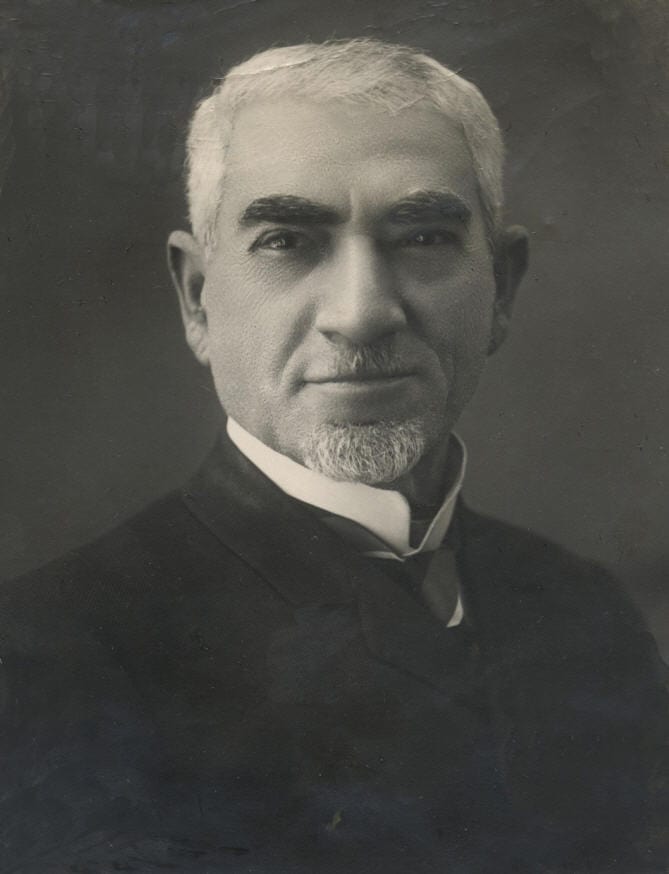The literary school known as realism had two main representatives in Eastern Armenian literature. Novelist and playwright Shirvanzade (1858-1935) was the better known of them, but we should not leave aside his younger and less widely known colleague Nar-Dos.
Mikayel Hovhannisian was born on March 13, 1867, in Tiflis, in the family of a wool seller. He received elementary education in the parish school of the church of St. Karapet, and later graduated from the Nikolayev high school in the city. He was admitted to the teachers’ school of Khon, in the province of Kutayis, but the lack of resources forced him to drop off and return to Tiflis. He shifted completely his orientation for a while, learning the craft of locksmith at the Mikayelian technical school, but he abandoned this to return to liberal arts, working in the press.
His first literary forays were in the 1880s, with poems and short stories. He also tried his hand at plays before going into fiction with novellas and novels. His first attempt at a realistic analysis of life came in 1888, under the pseudonym of Nar-Dos, in the epistolary novel Anna Saroyan. Here he depicted the deep abyss between human ideals and the society.
Between 1890 and 1906, Nar-Dos was the editorial secretary of the daily Nor Dar. This period coincided with a breakthrough in his literature, characterized by the depth of psychological analysis. In the short novel The Killed Dove (1898) he presented the mutilated and tragic fate of a woman. The heroine Sara is not destroyed by her resignation, but by her attempt to protest on behalf of those condemned by society. In 2009 this novel was turned into a homonymous movie in Armenia.
Nar-Dos worked in 1904 as secretary and copyeditor of the periodical Aghpiur-Taraz, and worked in the same capacity from 1913-1918 in the newspaper Surhandak. He published his best works in 1911 and 1912. In the novel Struggle (1911) he depicted the clash between the main public currents of the period in Armenian reality, the conservatives and the liberals, touched upon social issues, exposed the tragic ups and downs of life, and criticized the indifference and dismissal of society towards individuals. Perhaps his masterpiece was the novel The Death (1912), where the central theme were the views of a young man who had adopted a negative philosophy of life, in contrast to an individual who had died fighting against Turkish tyranny.
After the establishment of the Soviet regime, Nar-Dos continued his work as copyeditor for a while. The forty-fifth anniversary of his literary activities was commemorated in 1931 and he was conferred the title of Popular Writer of Georgia.
The talented novelist passed away in Tiflis on July 13, 1933. His son Nar Hovhannisian (1913-1995) was a soloist of the Opera of Yerevan and a Popular Artist of the Soviet Union. A street and a school in Yerevan bear the name Nar-Dos, and there are several streets named after him in other towns of Armenia and Artsakh.
